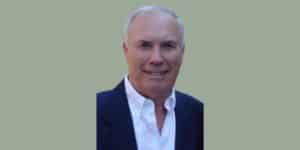Patrick Lencioni biography, books and quotes

Patrick Lencioni (1965), often referred to as ‘Pat’, is an American bestselling author, speaker, and consultant. He is the founder and CEO of The Table Group, a management consulting firm that helps companies improve their organizational health. Patrick Lencioni is best known for his book ‘The Five Dysfunctions of a Team’, in which he describes his management model ‘The Lencioni Trust Pyramid’. Pat’s latest book is titled ‘The 6 Types of Working Genius’, similarly titled to his podcast ‘The Working Genius’.
Patrick Lencioni biography
Patrick Lencioni was born in 1965 and grew up in Bakersfield, California. He holds a degree in Industrial Engineering from the University of California at Berkely, and began his professional career at management consulting firm Bain & Company. Prior to founding his own firm, he also worked at the Oracle Corporation and Sybase, as the VP of Organization Development.
In 1997, Lencioni founded The Table Group, a management consulting firm that focuses on organizational health and executive team development. Lencioni is known as a pioneer of the organizational health movement, helping leaders develop cohesive teams and engaged employees. As an author and speaker, Pat shares his knowledge about leadership, teamwork and organizational health, worldwide.
The Five Dysfunctions of a Team and The Lencioni Trust Pyramid
Patrick Lencioni wrote 13 books in total, which have been translated into over 30 languages and sold more than 8 millions copies. His best known book ‘The Five Dysfunctions of a Team’ explores work team dynamics and provides solutions for better team performance.
In this book the management model ‘The Lencioni Trust Pyramid’ is described, which is a powerful tool for team management, group dynamics and teambuilding. The five team dysfunctions are absence of trust, fear of conflict, lack of commitment, avoidance of accountability and inattention to results. These correspond to the layers of the Lencioni Trust Pyramid (from bottom to top): trust, conflict, commitment, accountability and results.
Lencioni states that his model can be interpreted both negatively and positively. Charactertic of a pyramid is that the bottom layer is the largest and the most important. However, in order for a team to function effectively, all layers and requirements should be fulfilled.
Speaker
As a keynote speaker, Patrick Lencioni has given talks to millions of people worldwide, touching on leadership, organizational change, teamwork and corporate culture. Fortune Magazine named him one of the ‘ten new gurus you should know’ and The Wall Street Journal described him as ‘one of the most in demand speakers in America’.
His keynote talks and programs touch on the advantages of organizational health, the disfunctions of teams, the ideal team player, and the truth about employee engagement, among others.
Lencioni has also given a TED talk, titled ‘Are You an Ideal Team Player?’, which reached over 800,000 views. In this talk, Pat testifies that, in a team-oriented world, the key to success is being humble, ambitious and smart.
He furthermore hosts two podcasts: ‘At The Table with Patrick Lencioni’ and ‘The Working Genius’. The latter helps people identify their natural gifts and find joy and fulfillment in their work and life. The first provides practical advice for every day leaders, covering topics related to the world of work.
Private Life
Patrick Lencioni currently lives in the San Francisco Bay Area, with his wife and four sons. He is an active church member and is the co-founder of Amazing Parish. This is a non-profit that supports pastors and parish leaders with free resources, webinars and consulting services, to improve their leadership, and therewith, their parishes.
Net worth
Lencioni’s 2024 net worth, according to People Ai, is estimated at 5.89 million dollars.
Patrick Lencioni quotes
- “At the heart of every great movie is conflict. It’s the same with a meeting. There should be conflict and tension.”
- “Conflict is the pursuit of truth.”
- “Ego is the ultimate killer on a team”
- “Executives must put the needs of the higher team ahead of the needs of their departments.”
- “For organizations seriously committed to making teamwork a cultural reality, I’m convinced that ‘the right people’ are the ones who have three virtues in common – humility, hunger, and people smarts.”
- “Great teams argue. Not in a mean-spirited or personal way, but they disagree when important decisions are made.”
- “Great teams do not hold back with one another. They are unafraid to air their dirty laundry. They admit their mistakes, their weaknesses, and their concerns without fear of reprisal.”
- “If everything is important, then nothing is.”
“If people don’t weigh in, they can’t buy in.” - “If we don’t trust one another, then we aren’t going to engage in open, constructive, ideological conflict.”
- “If you could get all the people in an organization rowing in the same direction, you could dominate any industry, in any market, against any competition, at any time.”
- “If you want to lead, you better love people. Even if you don’t like them, you have to love them enough to tell them the truth.”
- “It’s as simple as this. When people don’t unload their opinions and feel like they’ve been listened to, they won’t really get on board.”
- “Most organizations exploit only a fraction of the knowledge, experience, and intellectual capital that is available to them.”
- “No one on a cohesive team can say, Well, I did my job. Our failure isn’t my fault.”
- “Not finance. Not strategy. Not technology. It is teamwork that remains the ultimate competitive advantage, both because it is so powerful and so rare.”
- “Politics is when people choose their words and actions based on how they want others to react rather than based on what they really think.”
- “Remember teamwork begins by building trust. And the only way to do that is to overcome our need for invulnerability.”
- “So many people there are so concerned about being socially conscious and environmentally aware, but they don’t give a second thought to how they treat the guy washing their car or cutting their grass.”
- “Some people are hard to hold accountable because they are so helpful. Others because they get defensive. Others because they are intimidating. I don’t think it’s easy to hold anyone accountable, not even your own kids”
- “Success is not a matter of mastering subtle, sophisticated theory but rather of embracing common sense with uncommon levels of discipline and persistence.”
- “Team members need to be able to admit their weaknesses and mistakes, to acknowledge the strengths of others, and to apologize when they do something wrong.”
- “Team synergy has an extraordinary impact on business results.”
- “Teamwork is a strategic decision.”
- “Teamwork is not a virtue. It is a choice—and a strategic one.”
- “Teamwork requires some sacrifice up front; people who work as a team have to put the collective needs of the group ahead of their individual interests.”
- “The enemy of accountability is ambiguity”
- “The fear of conflict is almost always a sign of problems.”
- “The majority of meetings should be discussions that lead to decisions.”
- “There is no such thing as too much communication.”
- “Trust is knowing that when a team member does push you, they’re doing it because they care about the team.”
- “Trying to design the perfect plan is the perfect recipe for disappointment.”
- “What clients are really interested in is honesty, plus a baseline of competence.”
- “When there is trust, conflict becomes nothing but the pursuit of truth, an attempt to find the best possible answer.”
- “When truth takes a backseat to ego and politics, trust is lost.”
- “Where there is humility, there is more success, and lasting success.”
Books and Publications by Patrick Lencioni et al.
- 2022. The 6 types of working genius: a better way to understand your gifts, your frustrations, and your team. BenBella Books.
- 2020. The motive: Why so many leaders abdicate their most important responsibilities. John Wiley & Sons.
- 2018. How to spot ideal team players. Servant leadership in action: How you can achieve great relationships and results, 1735-1760.
- 2016. The ideal team player: How to recognize and cultivate the three essential virtues. John Wiley & Sons.
- 2015. The truth about employee engagement: A fable about addressing the three root causes of job misery. John Wiley & Sons.
- 2013. Building a Healthy Organization. School Administrator, 70(2), 39-43.
- 2012. The five dysfunctions of a team: Team assessment. John Wiley & Sons.
- 2012. The advantage: Why organizational health trumps everything else in business. John Wiley & Sons.
- 2011. Overcome Team Dysfunction. Velocity (13), 3(7).
- 2010. The five temptations of a CEO: A leadership fable. John Wiley & Sons.
- 2010. The five dysfunctions of a team: A leadership fable. John Wiley & Sons.
- 2010. Getting naked: A business fable about shedding the three fears that sabotage client loyalty (Vol. 33). John Wiley & Sons.
- 2010. Death by meeting: A leadership fable… about solving the most painful problem in business. John Wiley & Sons.
- 2009. Monday events. Healthcare Financial Management, 63(6), SS19-SS19.
- 2008. The 3 Big Questions for a Frantic Family: A Leadership Fable… About Restoring Sanity To The Most Important Organization In Your Life. Jossey-Bass.
- 2007. The five dysfunctions of a team: Participant Workbook (Vol. 8). John Wiley & Sons.
- 2006. Silos, Politics and Turf Wars: A Leadership Fable About Destroying the Barriers That Turn Colleagues Into Competitors. Jossey-Bass.
- 2005. Overcoming the five dysfunctions of a team: A field guide for leaders, managers, and facilitators (Vol. 16). John Wiley & Sons.
- 2003. The trouble with teamwork. Leader to leader, 2003(29), 35-40.
- 2002. Make your values mean something. Harvard business review, 80(7), 113-117.
- 2002. The Five Dysfunctions of A Team. Jossey-Bass.
- 2000. The Four Obsessions of an Extraordinary Executive: A Leadership Fable. Jossey-Bass.
- 1998. The Five Temptations of a CEO: A Leadership Fable. Jossey-Bass.
How to cite this article:
Baas, S.L. (2024). Patrick Lencioni. Retrieved [insert date] from Toolshero: https://www.toolshero.com/toolsheroes/patrick-lencioni/
Original publication date: 05/03/2024 | Last update: 05/03/2024
Add a link to this page on your website:
<a href=”https://www.toolshero.com/toolsheroes/patrick-lencioni/”>Toolshero: Patrick Lencioni</a>












